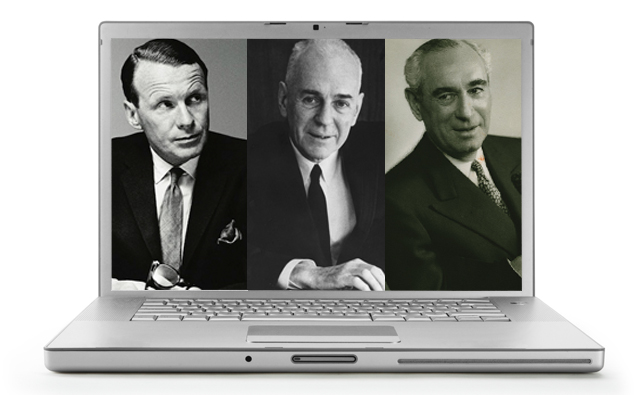Some old-school copywriting tips to improve your web content
I learned copywriting back when there were no computers. We studied the “grand old men” of copywriting, people like Albert Lasker, David Ogilvy and John Caples. We had the basics of good copy drilled into us. Well, the advertising world has changed, but, interestingly enough, the basic principles have stayed pretty constant, and they apply today in creating good SEO-friendly web content.
Here are a few tips:
1. Sell the sizzle, not the steak
“Talk benefits, not features” is an old copywriting maxim. The customer isn’t interested in features by themselves, they want to know how the features can benefit them.
In other words, don’t just talk about “dual core processors,” talk about how you can “work faster and avoid those frustrating wait periods.”
Don’t just talk about the resolution of a new flatscreen TV, talk about the “big, sharp picture and brilliant colors your family will enjoy.”
Don’t just talk about lowering cholesterol levels, talk about how “you can have a healthier heart and more energy.”
With some thought, you can take any product feature and expand it into a benefit that speaks to the core needs of your customers.
2. Write “you” copy, not “we” copy
I don’t know how many websites I’ve seen that have, as their main front page content, a Letter from the President or a Mission Statement. Or a big picture of the company headquarters.
People don’t care about these things. They are not searching for these things. They don’t want to hear about your company’s goals or plans or position in the industry.
They want to know one thing: what can you do for me?
So it’s not “we have distribution centers throughout the United States,” it’s “Guaranteed next-day delivery means you’ll have less downtime waiting for critical parts.”
It’s not “we pride ourselves on having the largest inventory,” it’s “You’ll save money and time by getting the best deals in one location.”
It’s not “we’ve won industry awards,” it’s “You’ll get quality work at a price you can afford.”
Good copy – and good web content – talks about the customer.
3. Never write an ad that your competitor could sign.
Advertising legend Rosser Reeves talked about the “Unique Selling Proposition” or USP.
A unique selling proposition refers to a unique benefit you can claim that enables you to stand out from your competitors. It’s something you can claim that your competitors can’t. And of course the unique selling proposition should highlight a product benefit that is meaningful to consumers.
This requires some thought. What can you offer that your competitors can’t? What makes your business unique or different?
These are some of the first questions we ask a client. It’s a cornerstone of your branding.
4. What’s your “elevator pitch”?
If you were in an elevator with a prospective customer and you had to give them your pitch between floors, what would you say? You’d have to boil down your offering to its most compelling essentials. That’s what old-school ad men called the “elevator pitch.”
Get clear on exactly what you want your audience to walk away remembering. Keep it simple. Focus on the three main thoughts you want your audience to remember.
You’d probably boil it down to a few simple things, like:
- Exactly what you are selling.
- What makes your product or service better than the competition.
- Why they should buy now.
And that should be your home page content.
Any thoughts?








